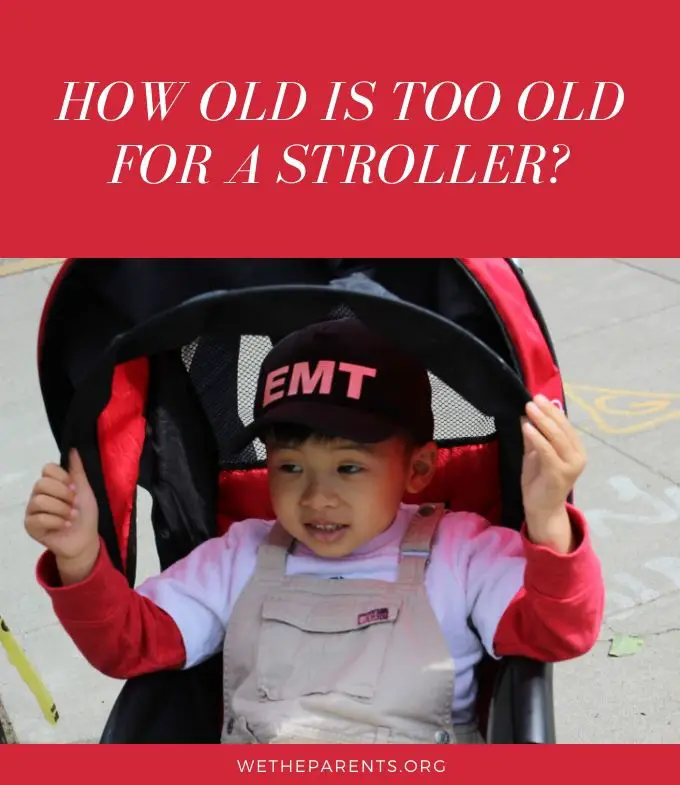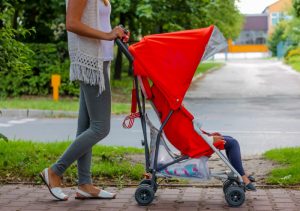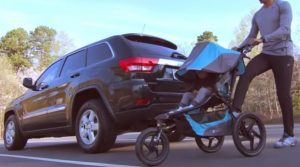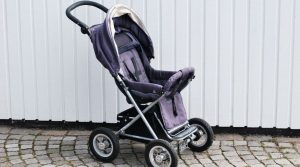Is it time to ditch your stroller? This 2 minute read will let you know if your toddler is ready, what the benefits are, and how to tactically transition.
Strollers are usually the top of every expectant mother’s baby registry. It’s not unusual to hear of parents who own a comprehensive collection of strollers. After all, joggers, prams, umbrellas, and convertibles all offer a different set of benefits. Not surprisingly, most parents find it hard to retire their strollers.
The murky usage guidelines and large capacities make it challenging for parents to know when to let go of their coveted carriages. So many parents have learned to rely on their trusty buggies long after their children learn to walk.
Which begs the question, how old is too old for a stroller?

When to use a stroller?
There are a few things you need to consider before you surrender your little one’s first set of wheels.
The convenience factor
Strollers are a haven for little ones and their caregivers. They enable parents to make long, speedy trips without stressing out their children. Strollers with large storage capacities free up parents’ hands, enabling them to multitask on the move. As such, strollers make morning runs, rushed commutes, and general errands all the easier.
It is hard to gauge a child’s walking potential. When nap-time arrives, legs become sluggish, and tempers rage, it pays to have a transportation system you can rely on. Carrying a child can be hard work!
The average weight of a 3-year-old child is over 31 pounds. That’s equivalent to approximately 4 gallons of water. In case you were wondering, that’s enough weight to cause a repetitive injury strain or worse.
A stroller is also a great way to stay mobile while enjoying the outdoors. Many strollers offer flexible seating, enabling caregivers to face their little ones in or out. Many children prefer to observe their surroundings from a safe, comfortable vantage point. Meanwhile, others enjoy a little extra one-on-one time.
Of course, there’s a fine line between a momentary convenience and a crutch. Some caregivers may use their stroller to help them power through a lengthy set of errands or morning run. While this may take some of the daily caregiving burdens away from mom and dad, it does nothing for the little one strapped inside their wheeled fortress.
Safety
A stroller makes it easier for parents to keep track of and control their children. Many parents wouldn’t consider entering airports, amusement parks, and other congested areas without their most coveted carriage in tow.
In high traffic or unfamiliar surroundings, a stroller can be a saving grace. Most strollers are equipped with five-point straps, brakes, and other essential safety features. Many strollers also feature sun canopies, weather shields, and muffs, making them a pivotal way for pedestrians to transport their child through a slew of harsh weather.
Other circumstances
Most parents start to wean their children off strollers around the age of 3. However, it is perfectly suitable for a 4- or 5-year-old child to still use their stroller in particular situations. It is important to consider a child’s developmental age when setting ground rules for using strollers.
According to the American Association of Pediatricians, strollers contribute to increased childhood injuries. These risks are only magnified as children get older.
Some strollers are not developmentally appropriate for older children. A child should never exceed the weight limit set by the stroller’s manufacturer. It’s never a good idea to push a stroller beyond its natural capacity. This is only detrimental to the device and your child.
Parents are responsible for putting their children in an environment that is suitable for their development. For many, this means making some major lifestyle changes. It helps to remember that your child’s earliest years are essential and fleeting.
When to ditch the stroller
Before you wheel your kindergartner to class, consider the long-term effects of your decision. There are plenty of valid reasons to leave those wheels behind, including children’s general need for physical activity.
Health and wellness
According to the Department of Health and Human Services, children over 6 should get at least 60 minutes of moderate to vigorous physical activity each day. The guidelines for children under 5 are less stringent. However, children between the ages of 2 and 3 should take part in a variety of physical activities each day. The benefits of physical activity are paramount. According to the CDC, children are less likely to develop heart disease, cancer, Type 2 diabetes, high blood pressure, osteoporosis, and obesity. Physically active children are also expected to perform better in school. Not to mention, they are less likely to develop mental conditions, such as anxiety and depression.
Parents should only use their strollers in moderation. Many parents do their kids a disservice by constantly carting them around in a pint-sized transportation system. When children know their stroller is on standby, they rarely push their physical limits.
Stand your ground by offering plenty of positive reinforcement. Compliments, pocket snacks, and water can make foot travel possible. You may need to cut down on your distance, take frequent breaks, and pause for brief investigations. Keep in mind each moment of your child’s exploration is lending to their physical and cognitive development.
Development
Between the ages of 2 and 5, children are expected to achieve a long list of developmental milestones. Each experience your child has contributes to their physical and cognitive development. Between the ages of 2 and 7, children go through the preoperational stage of cognitive development. During this stage, little ones need to explore the world around them.
Language development is a huge part of the preoperational stage. If you do use a stroller during this stage of your child’s development, opt for a rear-facing model. Rear-facing strollers prompt more healthy communication between parents and children.
Strollers with large weight limits can be deceiving. Most jogging strollers can accommodate a child that is 50 pounds or larger. That’s the average weight of a 7-year-old. Despite that, most 7-year-olds should not be riding in a stroller.
Mobility
Contrary to their intended purpose, strollers often inhibit people from meeting their mobility goals. Neverending staircases, mile-high curbs, and potholes can all put a damper on stroller trips. If you have ever tried to shove a jogging stroller into a crowded coffee shop, you know the pain.
Sadly, Google Maps has yet to roll out a stroller mode. Therefore, parents must think carefully before deciding to bring along a set of wheels.
A few more questions…
Before you ditch your stroller, remember that a set of wheels can provide mental and physical relief for both you and your children. If you’re buying a stroller for the first time, consider the potential lifetime of the product. Quality strollers don’t come cheap! It’s best to find a durable, long-lasting option that will serve you and your child for several years.
Big kids can benefit from strollers too. They just shouldn’t be using them as regularly as toddlers and babies. Be mindful of the time your child spends strapped in their buggy. Make sure that their sedentary experiences are balanced by plenty of exercise and exploration.
Think about your child when deciding when to ditch their stroller. As parents, we cannot tell you how many times strollers have come to our rescue. We’re also guilty of occasionally overindulging in their convenience. Whenever possible, foster your child’s development and safety over your convenience. Remember, quality parenting takes flexibility and openness to change. Sometimes, that means ditching your most coveted set of wheels.









